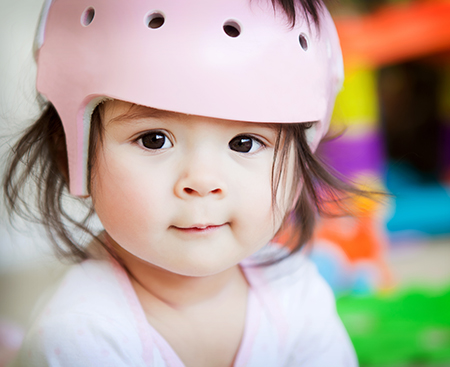
Could we be one step closer to developing a biological treatment for craniosynostosis?
Building upon a body of research that demonstrated that the premature fusion of skull bones — which can cause a host of problems as an infant’s brain continues to grow — is caused by a lack of stem cells, Associate Dean of Research Yang Chai PhD ’91, DDS ’96 and his team aim to better understand the processes necessary to keep the skull’s sutures open.
In an article recently published in the journal Bone Research, Chai and his team shared their discovery that skull sutures remain patent as a result of the interaction between mesenchymal stem cells, osteoblasts (bone-forming cells) and osteoclasts (bone-destroying cells). The researchers were able to rescue a prematurely fusing suture in genetically mutated mice by activating a specific signaling pathway.
A different type of treatment
The findings bring researchers ever closer to being able to effectively and comprehensively treat craniosynostosis, a birth defect affecting one in 2,500 babies, by manipulating a signaling pathway to keep the sutures open long enough for the brain to fully develop.
In a normally developing baby, the craniofacial bones do not grow together for up to 18 months to allow for the brain to reach nearly 70 percent of its eventual size. It’s these open sutures that cause babies’ heads to have “soft spots.”
In an infant with craniosynostosis, the skull bones fuse together before the brain has fully developed, which can cause an array of problems, including hearing and vision defects and developmental disorders.
The discovery could one day lead to a different treatment intervention for babies with craniosynostosis.
Up until now, if the bones prematurely fused, a doctor had to operate, typically within the first year of the baby’s life. The surgery entails removing the top of the child’s skull, cutting it into segments and then stapling it back together, creating enough space for the infant’s developing brain to grow.
Chai’s findings could allow surgeons to treat the problem with a biological intervention — something Chai’s team is already working on.
Chai is the Associate Dean of Research at the Herman Ostrow School of Dentistry of USC and the Director of the Center for Craniofacial Molecular Biology.
He earned his doctor of dental medicine degree from Peking University in China in 1984, before moving to USC to pursue doctor of philosophy and doctor of dental surgery degrees.
He is widely recognized throughout the dental and craniofacial research community for his investigations of the molecular and cellular mechanisms of craniofacial development, including oral and facial birth defects such as cleft palate, as well as stem cells in craniofacial tissue regeneration.
